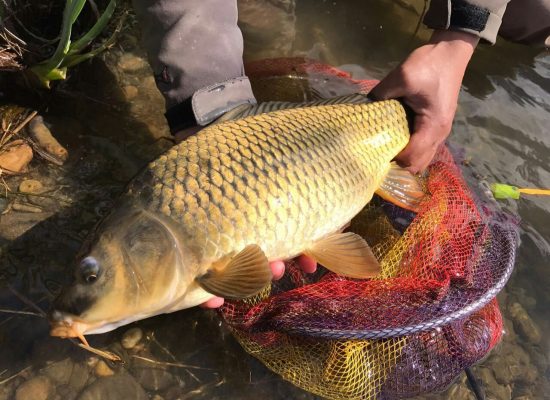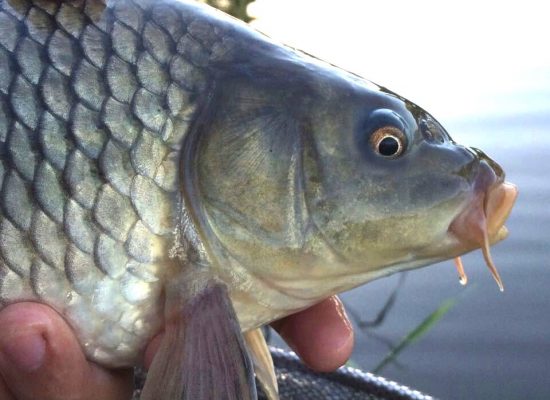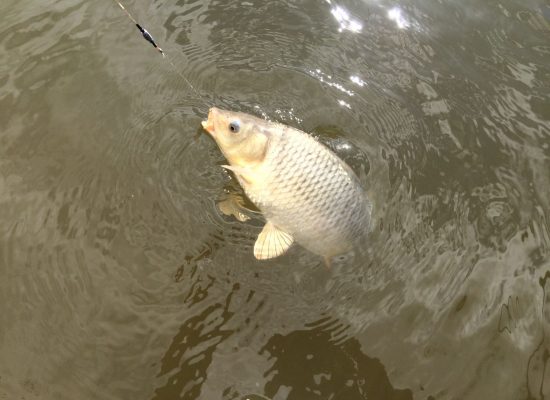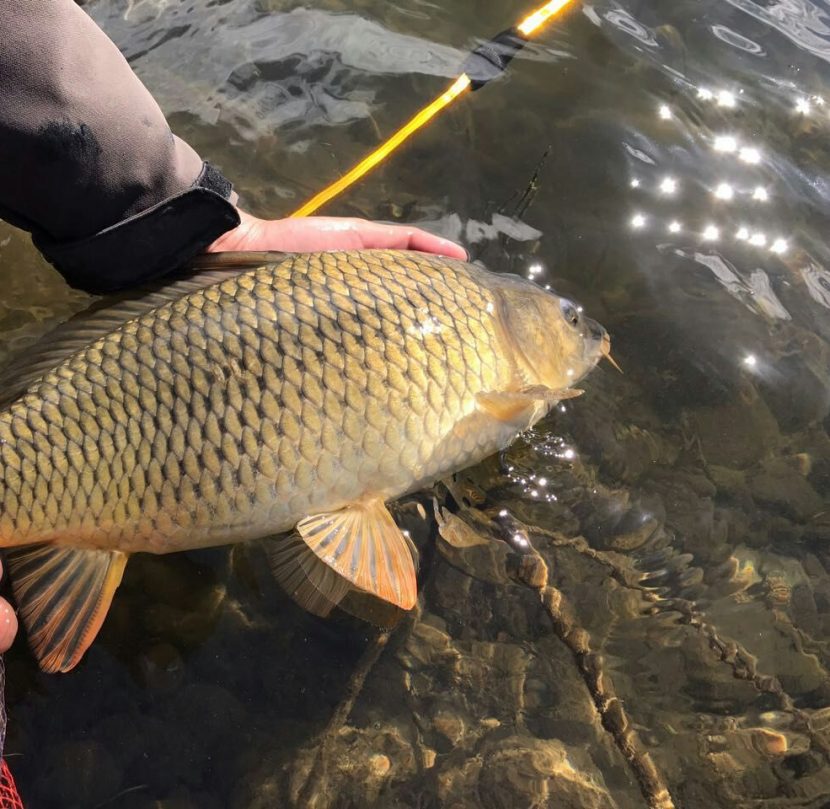At First Light Fishing & Tackle, one of our most favourite fish species to target is carp. Intelligent, adaptable, and puts up a solid fight, it’s easy to understand why the Golden Ghost is one of the most sought after fish by anglers around the world.
Despite being internationally renowned as a gamefish, carp have endured an infamous reputation amongst our local waters because they are often perceived as a dangerously invasive and non-sport fish species here in British Columbia. This negative spotlight is further fuelled due to the media exposure of the carp invasion in the Mississippi River and other water ways along the east coast leading up to the Great Lakes.
However, we need to emphasize that the overpopulated carp seen jumping all over the place in eastern systems are completely unalike to the Common and Mirror carp we encounter here in Western Canada. Each type of carp behaves quite differently and the ones in BC are certainly not a threat to our waters to the degree of those shown by Asian and Silver carp in the east.
Although the carp stigma may still loom about, recent years has demonstrated that there has been an emerging interest in this fishery and we hope that this brief blog about carp behaviour can further grow your appreciation for these fish as well as help you target them!

As mentioned earlier, the two main type of carp that can be found in BC are the Common and Mirror carp. You can distinguish between the two based on the pattern of their scales. The Common carp typically has consistent shiny scales covering from the end of the gill plate to the tail, while the Mirror carp carries a more distinct pattern of scales with scaleless patches in between. There may be times where you initially think you’ve landed a Mirror carp because of a couple of missing scales, but rest assured if the rest of the scales are full and consistent it may just be a Common carp that had some skin breaks due to buckling with other carp. Both types of carp are schooling fish that often travels with 5 to 6 others. Females tend to have a bulkier body, meanwhile the males are more slimmer and slender. Unlike the domesticated carp (the huge ones that are fed to grow up to 80lbs!), the majority of BC carp are wild so they range between 5 to 20lbs and in some opinions put up a better fight pound for pound compared to their European relatives (kinda like stocked trout vs wild). Having said that however, we wouldn’t be surprised to hear stories about lurkers extending past that range since carp have faced little fishing pressure in BC.
While carp are opportunistic feeders to what is available and very versatile in adapting to their surroundings, there are a few common things they consistently feed upon in their natural diet across different bodies of water. Their natural diet consists of aquatic insects (nymphs and chironomids), blood worms, underwater snails, the tender parts of aquatic plant roots, and sometimes even small crayfish. Some human edibles are also part of the carp’s favourite delicacies, such as corn, seeds, oat & grain substances, and fallen berries from nearby bushes or farms.
Carp find these different foods with their sensitive mouth where concentrated nerves around their lips help them detect their next meal. The nerves in their short whiskers also play a part in sensing and assists in distinguishing between food and inedible objects in the water. Most of it’s diet are found near lying at the bottom, so BC carp have a habit of mid to bottom feeding as a result. Once something of interest has been located, the carp will not immediately commit to engulfing the food like trout or bass because of the anatomy of their soft mouth. Instead, the carp will extend their lips a little bit to slowly suck in and then spit out the object to investigate the potential meal. In addition to all this, carp also have keen eyesight and a great sense of smell to help them sort out what is edible and what is not. Ultimately, thanks to their cautious feeding behaviour and sensory skills, carp can be an elusive yet rewarding fish to target.

Besides understanding their feeding diet and habit, there are two other factors that could help increase your chances of encountering carp. The first is location. Since their body structure is bulkier and not as streamlined as some of other BC fish species, carp prefer to lurk in still/slow moving water such as sloughs, lakes and ponds.
The second key factor is water temperature. Carp tend to be more active in warmer waters after the ice has melted and some sunlight have heated things up. The rise in water temperature allows the aquatic life that carp feed on to emerge and as well as enhances their scent, prompting the carp to begin actively feeding in shallower waters. The ideal water temperature for carp fishing will vary between the opinions of each angler, but at First Light we have generally found approximate levels of 15 degrees will get the job done.
So the warmer the water, the higher chance the carp are actively feeding right? Not necessarily. Carp spawning seasons are also determined by water temperature and once the more focused they are on spawning the less they are thinking about feeding. Since the water temperature may fluctuate between ideal and too high during the spring and summer months, carp may be spawning multiple times a year. To anticipate the feeding times of carp, it would be more accurate to observe the temperature rather than basing it off on what month it is. Once you begin to stumble upon their sticky eggs around submerged structures, plant roots & lilies or start seeing consistent topwater splashes from carp (hormones kicking in), chances are the carp are in spawning mode! If we did have to label the months for carp fishing then late April to Early May is a good start, fair chances from June to August in slightly deeper waters, and September to early October is when the carp actively fatten up before their Winter hibernation.

Now that some of the essentials to carp behaviour in BC have been covered, we at First Light Fishing & Tackle, hope this insight will help you in better understanding the carp's mindset and ultimately contribute to your knowledge in targeting them as well. Though the Golden Ghosts may appear hidden away, they are definitely subtlety cruising along our local waters and waiting to test the next angler they run into. If you've got any more questions on these spectacular gamefish, feel free to pop by in the store! If not, we'll see you on the water!


